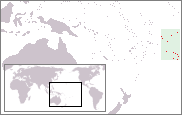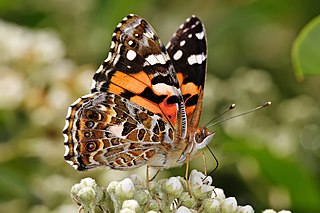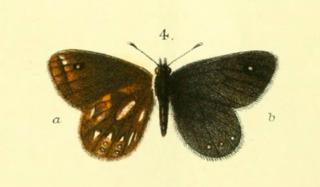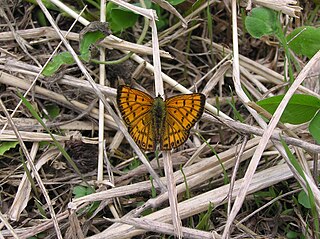 W
WLepidoptera of New Zealand consist of both the butterflies and moths recorded from the islands of New Zealand. According to a recent estimate, there are a total of approximately 1,800 Lepidoptera species present in New Zealand. Of these, about 1,600 are endemic. Lepidoptera is the third largest insect order in New Zealand.
 W
WThe Lepidoptera of the Cook Islands consist of both the butterflies and moths recorded from the Cook Islands, a self-governing island country in the South Pacific Ocean.
 W
WThis is a list of butterflies of Niue.
 W
WA list of the native butterflies of Tokelau — a country of three tropical coral atolls, that is a dependent territory of New Zealand. It is located in the South Pacific Ocean.
 W
WArgyrophenga is a genus of butterflies that are endemic to New Zealand. It comprises three species that are found in the Southern Alps of the South Island of New Zealand.
 W
WArgyrophenga antipodum, the common tussock or tussock ringlet, is a species of butterfly commonly found in the South Island of New Zealand.
 W
WThe Australian painted lady butterfly is mostly confined to Australia, although westerly winds have dispersed it to islands east of Australia, including New Zealand. Debate surrounds the taxonomy of this species. Some believe that the Australian painted lady should be a subspecies of the painted lady due to the similarity in lifestyle and behaviour. Furthermore, the painted lady is found around the globe, but Australia is the only location in which it varies enough to be considered a separate species.
 W
WErebiola butleri, or Butler's ringlet, is an elusive New Zealand endemic butterfly, discovered in 1879 by John D Enys at the alpine pass at the head of the Rakaia River. It is the only member of the genus Erebiola.
 W
WHypolimnas bolina, the great eggfly, common eggfly or in New Zealand the blue moon butterfly is a species of nymphalid butterfly found from Madagascar to Asia and Australia.
 W
WThe meadow argus is a butterfly in the family Nymphalidae, commonly found in Australia. It is also known as Albin's Hampstead eye in the United Kingdom, where it has occurred only as an accidental import.
 W
WLycaena boldenarum, the boulder copper, is a species of butterfly which is endemic to New Zealand, it is found on both North Island and South Island in a wide variety of open habitats including grassland, shingle and sand dunes. They are normally only active in bright sunny conditions and their flight is usually low to the ground. The boldenarum part of the species name given by the Scottish entomologist Adam White in honour of his first wife, Helen and her sister Frances, whose maiden name was Bolden. It shares the Maori name pepe para riki with two congeners the common copper and the glade copper.
 W
WLycaena rauparaha, Rauparaha’s copper or mokarakare is a species of butterfly endemic to New Zealand. It acquired its English common name because it occurred in the same coastal areas as the rangatira (chief) and war leader of Ngāti Toa Maori, Te Rauparaha.
 W
WLycaena salustius, the common copper, is a butterfly of the family Lycaenidae. It is found in New Zealand.
 W
WThe meadow argus is a butterfly in the family Nymphalidae, commonly found in Australia. It is also known as Albin's Hampstead eye in the United Kingdom, where it has occurred only as an accidental import.
 W
WThe New Zealand red admiral is a butterfly endemic to New Zealand. Its Māori name is kahukura, which means "red cloak". The red admiral is a member of the family Nymphalidae, the subfamily Nymphalinae and the tribe Nymphalini. There are two subspecies: V. g. gonerilla, which occurs on the mainland of New Zealand, and V. g. ida, which occurs on the Chatham Islands.
 W
WThe yellow admiral or Australian admiral is a butterfly native to Australia, New Zealand, Lord Howe Island, and Norfolk Islands. The Māori name is kahukowhai, which means "yellow cloak". The yellow admiral is a member of the family Nymphalidae, the subfamily Nymphalinae as well as the tribe Nymphalini.
 W
WZizina otis, the lesser grass blue, is a species of blue (Lycaenidae) butterfly found in south and southeast Asia. The species was first described by Johan Christian Fabricius in 1787. The lesser grass blue is often misidentified as Zizina labradus, the common grass blue.